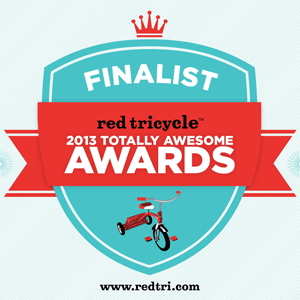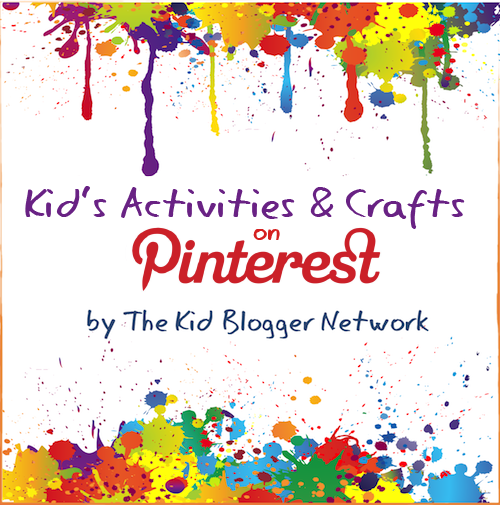Freezer Paper Stencilling
Tutorial for Beginners
by my crafty sister, Kate
Freezer paper stencilling is as easy as you want to make it (i.e., the complexity or ease of design) and it is one of those rewarding crafty projects where you stand back and think "How cool is it that I made that!"
You will need:
Step 1: Choose a design
To start, keep it simple. Avoid designs where multiple colours touch or overlap, or very detailed designs, until you’re comfortable using the exacto knife. Silhouettes are a great way to start.
You can find cool (free) programs to download to play with designs, etc. Try taking a photo of someone and using the "posterize" effect on these programs. I really like “Photoscape” and “Paint.Net”.
Step 2: Print out your design in the size you want
You can put the freezer paper in the printer to print the design directly onto the paper side. Or just print it out on regular paper and trace it onto the paper side of the freezer paper.
Step 3: Cut out your design
Be mindful of your positive and negative spaces and what exactly you want painted or covered. Keep in mind small pieces you cut out and whether or not you will need them ironed on (think eyes). You’ll see what I mean...
Also (obvious tip alert!), make sure you are angling the exacto knife the right way. I did not and could not understand how a - literally - razor sharp blade could not cut paper!
Step 4: Iron your stencil, waxy side down, to your t-shirt
Press first so your stencil won't shift and then use normal back & forth iron motions. Be careful not to hook the iron on your edges.
Try to line it up correctly (my brother is now the proud owner of a slightly crooked Lego Stormtrooper t-shirt). If you need to, peel off the stencil and iron it back on. That’s one of the beautiful things about freezer paper!
Also, make sure the edges (inner & outer) are properly sealed or the paint will bleed and the clean edged stencilling effect will be lost.
And remember to iron on your little saved pieces!
Step 5: Paint with fabric paint
Put your cardboard (or other material) in between the t-shirt layers under your stencil, so the paint won't bleed through to the back. Make sure it covers your entire design.
Apply your paints going from the outer edges inward. Try not to brush from the fabric towards the stencil as this can push paint up under your edges and cause bleeding. Go in sections and then once the whole design is painted, go back over to blend any lines or clumps so it is smooth.
You don’t want too much paint or the design will be heavy and not a flexible part of the t-shirt but you don’t want too little paint or you won't get proper coverage, and the fabric (especially if dark in color) will show through.
Let it dry.
Step 6: Remove the stencil
Take the edge of the freezer paper and gently pull it up. You cannot re-use the stencil, so don’t worry if it tears a little but don’t pull too hard. Remember, if you ironed pieces on in the main body of the design (e.g., eyes), peel them off too. I find it easiest to use the exacto knife to lift these little pieces.
Step 7: Show it off to everyone in the house with a big smile and a sing song “Ta Da!”
Recognition is an important part of positive reinforcement, right?
Tips:
* Follow all instructions on your fabric paint - mine says not to wash your t-shirt for 72 hours after applying the paint.
* Tape your papers to a window to do the tracing.
* For brushes, I like foam brushes for bigger areas (but try to dab rather than brush as the foam tends to pull on the t-shirt fabric). Regular bristle paint brushes are better for small areas, but in bigger areas you tend to see the brush strokes in the paint. Trial & error really, see what you like.
* You can also stencil scarves, skirts, table runners, pillows, hats, tote bags…seriously - endless options.
I hope this was helpful. Have fun and thanks for having me, Mama Pea Pod!

- t-shirt - pre-washed, or your paints may not adhere well
- fabric paint - follow the instructions on the packaging
- paint brushes
- freezer paper - note, this is not wax paper. It is specifically called “freezer paper” and is sort of waxy on one side but just paper on the other.
- exacto knife
- self healing mat or some corrugated cardboard
- iron (dry, no water in it!)
- piece of corrugated cardboard or plastic
Step 1: Choose a design
To start, keep it simple. Avoid designs where multiple colours touch or overlap, or very detailed designs, until you’re comfortable using the exacto knife. Silhouettes are a great way to start.
You can find cool (free) programs to download to play with designs, etc. Try taking a photo of someone and using the "posterize" effect on these programs. I really like “Photoscape” and “Paint.Net”.
Step 2: Print out your design in the size you want
You can put the freezer paper in the printer to print the design directly onto the paper side. Or just print it out on regular paper and trace it onto the paper side of the freezer paper.
Step 3: Cut out your design
Be mindful of your positive and negative spaces and what exactly you want painted or covered. Keep in mind small pieces you cut out and whether or not you will need them ironed on (think eyes). You’ll see what I mean...
Also (obvious tip alert!), make sure you are angling the exacto knife the right way. I did not and could not understand how a - literally - razor sharp blade could not cut paper!
Step 4: Iron your stencil, waxy side down, to your t-shirt
Press first so your stencil won't shift and then use normal back & forth iron motions. Be careful not to hook the iron on your edges.
Try to line it up correctly (my brother is now the proud owner of a slightly crooked Lego Stormtrooper t-shirt). If you need to, peel off the stencil and iron it back on. That’s one of the beautiful things about freezer paper!
Also, make sure the edges (inner & outer) are properly sealed or the paint will bleed and the clean edged stencilling effect will be lost.
And remember to iron on your little saved pieces!
Step 5: Paint with fabric paint
Put your cardboard (or other material) in between the t-shirt layers under your stencil, so the paint won't bleed through to the back. Make sure it covers your entire design.
Apply your paints going from the outer edges inward. Try not to brush from the fabric towards the stencil as this can push paint up under your edges and cause bleeding. Go in sections and then once the whole design is painted, go back over to blend any lines or clumps so it is smooth.
You don’t want too much paint or the design will be heavy and not a flexible part of the t-shirt but you don’t want too little paint or you won't get proper coverage, and the fabric (especially if dark in color) will show through.
Let it dry.
Step 6: Remove the stencil
Take the edge of the freezer paper and gently pull it up. You cannot re-use the stencil, so don’t worry if it tears a little but don’t pull too hard. Remember, if you ironed pieces on in the main body of the design (e.g., eyes), peel them off too. I find it easiest to use the exacto knife to lift these little pieces.
Step 7: Show it off to everyone in the house with a big smile and a sing song “Ta Da!”
Recognition is an important part of positive reinforcement, right?
Tips:
* Follow all instructions on your fabric paint - mine says not to wash your t-shirt for 72 hours after applying the paint.
* Tape your papers to a window to do the tracing.
* For brushes, I like foam brushes for bigger areas (but try to dab rather than brush as the foam tends to pull on the t-shirt fabric). Regular bristle paint brushes are better for small areas, but in bigger areas you tend to see the brush strokes in the paint. Trial & error really, see what you like.
* You can also stencil scarves, skirts, table runners, pillows, hats, tote bags…seriously - endless options.
I hope this was helpful. Have fun and thanks for having me, Mama Pea Pod!
This post is part of the Time for Mama series here at Mama Pea Pod. Join us each month for ideas for creative playtime just for moms!





























